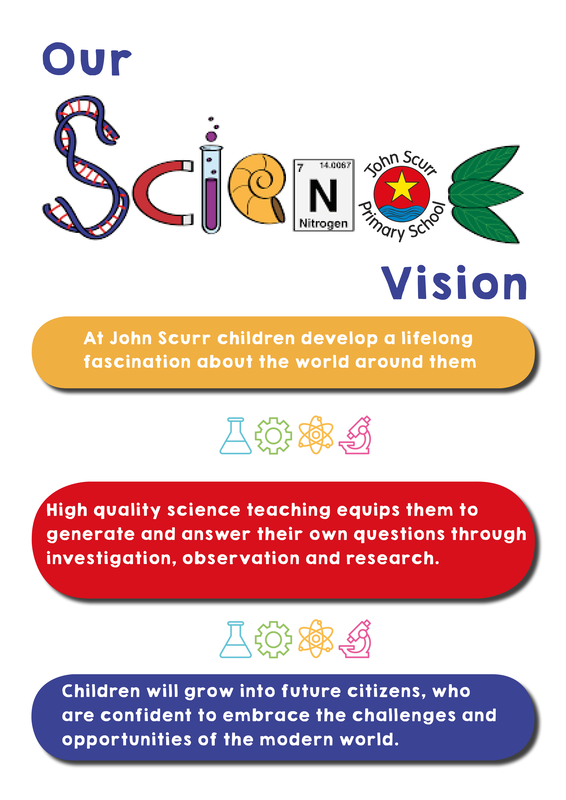Science at John Scurr
‘The scientist is not a person who gives the right answers; they are the one who asks the right questions.’
Claude Levi-Strauss
Intent
At John Scurr we have embraced the new curriculum in science, which has a strong emphasis on different types of investigation ranging from fair testing to observation over time and individual research, whilst maintaining the learning and teaching of the knowledge based elements of this subject. Children also learn about significant scientists and their contribution to the body of knowledge and understanding of the world we live in.
In Key Stage One children learn science through a topic based approach and in Key Stage Two units of science are taught discreetly with cross curricular links made where appropriate. Links with maths, including measuring, recording and interpreting data are particularly strong. Electronic measuring and recording equipment is used to strengthen the use of IT in science.
Children are encouraged to ask questions and develop a curiosity for the world around them. We want them to learn how to think scientifically so they can solve problems and become confident with scientific knowledge and ideas. To help them with this, children are encouraged to discuss their science work and raise further questions which they can then seek to answer using practical investigation and research.

What Do We Teach
Our Science curriculum teaches both substantive knowledge (the subject knowledge and vocabulary for each topic) and disciplinary knowledge (the knowledge of how to work scientifically).
- EYFS: Understanding the World
- Year 1:
- Seasonal changes
- Plants
- Animals, including humans
- Humans
- Year 2:
Living things and their habitats - Animals, including humans
- Use of everyday materials
- Plants
- Year 3:
- Animals, including humans
- Forces and magnets
- Light
- Plants
- Rocks
- Year 4:
- Living things and their habitats
- Electricity
- Animals including humans
- Sound
- States of matter
- Year 5:
- Properties and changes of materials
- Aninmals including humans
- Earth in space
- Forces
- Living things and their habitats
- Year 6:
- Living things and their habitats
- Light
- Animals, including humans – circulatory system
- Animals, including humans – water transportation
- Electricity
- Evolution and inheritance
How Do Pupils Learn
A guiding principle of the Science curriculum is that all learning connects to prior learning. Children develop practical experience and consolidate this before moving to more abstract knowledge and concepts.
Each unit includes an overview for children which details the topic’s big idea and prior learning, plus substantive and disciplinary knowledge. Dual coded ‘knowledge organisers’ contain core information for children’s reference and act as a means of retrieval practise, which is the deliberate retrieval of knowledge in a way that supports long-term memory formation.
Lesson sequences are carefully considered to ensure that the content has a clear and coherent order, allowing children to connect new learning to existing knowledge. Each lesson is structured around a learning question which children are able to answer by the end. Curriculum documents provide teachers with a range of task ideas to support the development of this knowledge and understanding. For each lesson, children use a knowledge note which develops the core knowledge found in knowledge organisers. Knowledge notes focus pupils’ working memory to the key question that will be asked at the end of the lesson. They reduce cognitive load and help avoid split-attention effect.
Retrieval practise is embedded in the learning sequences to support long-term memory, using spaced learning and ‘interleaving’ as part of the class teacher’s lesson design.
Children also study vocabulary modules which provide vital Tier 2 and 3 vocabulary connected to Science topics. These include etymology and morphology, relevant idioms and colloquialisms. We aim to provide a culture of high challenge combined with low threat, putting no ceiling on any child’s learning and providing the right scaffolding for every child to achieve.
How Do We know What Children Have Learned ?
- Questioning
- Pupil Book Study
- Talking to teachers
- Low stakes “drop in” observations
- Quizzing and retrieval practices
- Feedback and marking
- Progress in book matches the curriculum intent